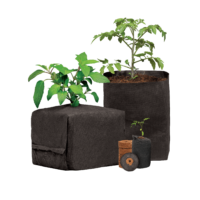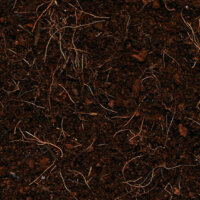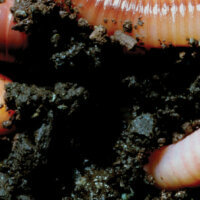-

Utilizing Irrigation Strategies to Optimize Cannabis Yield in CocoPro® and Rockwool
Key Takeaways Background Most indoor and greenhouse Cannabis producers cultivate their crop using soilless growing media. These media can be...
-

Protected: Short-Form Article Template
There is no excerpt because this is a protected post.
-

Kelp
Kelp is a popular plant additive. Understanding what it is and how it benefits plants can help a gardener make...
-

Identifying Root Rot in Your Plants
There are several symptoms of root rot and many can often be mistaken for nutrient deficiencies or temperature extremes. What...
-

The Soil – Blog Part 2
Hey friends! Welcome back. So after the first Soil Blog post, I was all excited telling a friend of mine...
-

Why Plants Need Sugars and What They Do With them
Plant carbohydrates, in the form of sugars are the energy source by which all plants carry out their major functions....
-

Temperature and Humidity
In order to learn how to create the best environment for your particular crop it is helpful to understand how...
-

The pH connection between bacteria and fungi
So, first things first. I’m sure you are wondering, “What kind of person blogs about soil, pH bacteria and fungi?”...
-

Plant Stress Signs and Preventatives
Most growers know to keep an eye out for common plant stressors like insects, diseases, and water and nutrient levels....
-

When to Rinse or Buffer Coco Coir
If you are reading this, you probably already know what coco coir is, and what it means to be “buffered.”...
-

Plant Nutrients
Macro-Nutrients Symbol From Avail to Plants Function in Plants Nitrogen N NO3-, NH4+ Component of amino acids, proteins, nucleotides, nucleic...
-

What Is Cloning?
I know what you are thinking. Images of Dolly the cloned sheep are popping up in your head as we...
-

Light
The most essential requirement for growing plants is an adequate source of light. If you grow outdoors, an abundance of...
-

Ebb & Flow Garden System
The Ebb and Flow method feeds plants by flooding the plant site(s) with a nutrient rich solution and then allowing...
-

Rockwool
Rockwool is an artificial media made from quartz sand that has been heated above 1200° C and spun into fibers...
-

Rice Hulls
Rice hulls are the by-product of rice cultivation of food for humans and animals. Rice hulls are used in three...
-

Pumice
Pumice, like perlite, is a product of volcanic activity and mined from quarries, ground and sieved for aggregate size. It...
-

Perlite
Perlite is made from volcanic rock that has been heated to about 700° C until the material expands, similar to...
-

Peat Moss
Peat moss if formed by the slow decomposition of mosses, like sphagnum, or sedges in a wet, acidic environment such...
-

Hydroton
Hydroton is the trade name for “lightweight expanded clay aggregate” or LECA. Simply put, small clay balls are heated in...
-

Hydrolite
Hydrolite is the product name for Botanicare’s exclusive silica based mineral rock also known as zeolite. Hydrolite is a natural...
-

Coconut Coir
Coconut Coir is the husk (mesocarp) of the coconut fruit that is processed and composted to produce a fine particle...
-

Vitamins in Plants
We all are familiar with the need for vitamins in the human diet. What about plants, do they require vitamins...
-

Vertical Gardening
The stereotypical garden space is a horizontal, flat, well lit area, and while that configuration is useful in many circumstances,...
-

Foliar Spraying
Olympians wear high compression swimsuits that are nothing short of technological marvels. They reduce drag and allow athletes to swim...
-

Establish and Maintain a Healthy Root Microbiome
Plants consist of several basic organ systems, and roots are an important one. In both soil culture and hydroponics, roots...
-

Five pros and cons of growing organically in a hydroponic system
by Guest Author Annie S. White, Freelance Technical Writer & Horticultural Consultant. The marriage of hydroponics and organics makes an...
-

Feeding and watering frequency: Drain-to-waste setups and coir based media
How often should you feed and water your plants? When growing plants in a drain-to-waste setup and using a nutrient...
-

Silica
Silica supplements are a popular addition to nutrient regimens, making plants stronger and less susceptible to environmental and pathogenic damage....
-

Calcium, Magnesium, and Coco
Calcium and magnesium are both important nutrients for plants, and they have a special relationship with coco coir that requires...
-

Hawthorne Hydroponics
Hawthorne Hydroponics a subsidiary of Scotts Miracle-Gro has acquired Chandler-based Botanicare LLC founded by Treg Bradley Passion, vision and resources...
-

Important Announcement From Botanicare
Valued Retail Partners, I am very excited to finally announce that Botanicare has agreed to be acquired by Hawthorne Hydroponics....
-

Foliar Feeding: Nutrients and Beneficial Bacteria
By Derex Q. Zellars | Environmental Scientist Traditional methods used to protect plants from disease have been largely based on...
-

Nourish your Plants Above and Below with Seaweed
By Derex Q. Zellars | Environmental Scientist Scientific research has confirmed that seaweeds help in increasing yields, drought resistance, frost...
-

Coconut Coir, Basics and Benefits
Coconut Coir is a widely used organic and renewable growth medium for both hydroponic and container gardening. Coir is made...
-

Mixing Nutrients – A Beginner’s Guide
* Keep in mind that some supplements will add to your total EC/PPMs, check the labels for their NPKs, or...
-

NPK: A simple guide
When it comes to indoor and outdoor gardening, it is important to understand the significance of the N-P-K ratio. You...
-

Vermicomposting: Reduce, reuse, recycle with the help of worms
Many of today’s gardeners want to improve their land’s fertility while also supporting green efforts. One option stands out as...
-

Understanding EC/PPM: Q&A with Blue Lab
We all understand the importance of applying nutrients at the correct strength and the appropriate time to achieve successful crop...
-

Water Quality for Hydroponics
Water makes up as much as 90% of the mass of a plant- even more in some crops, such as...
Hydro 101
Everything you need to know for a great grow



























